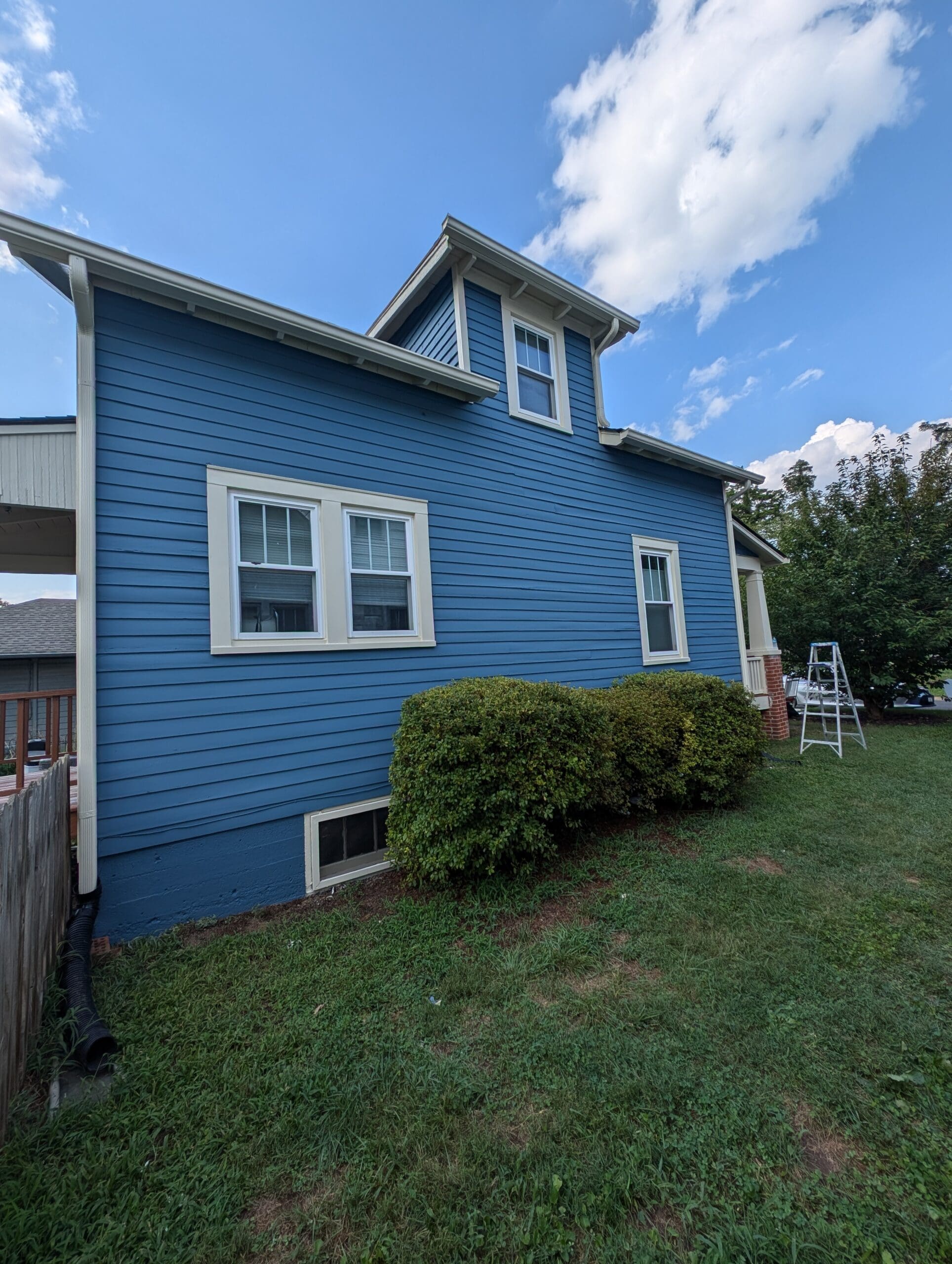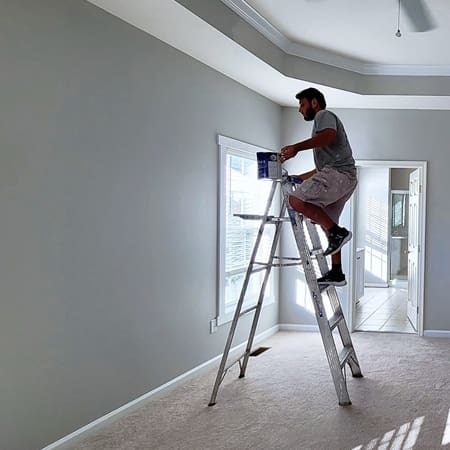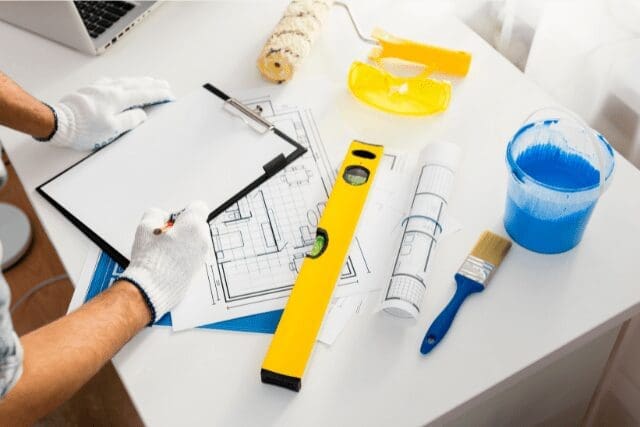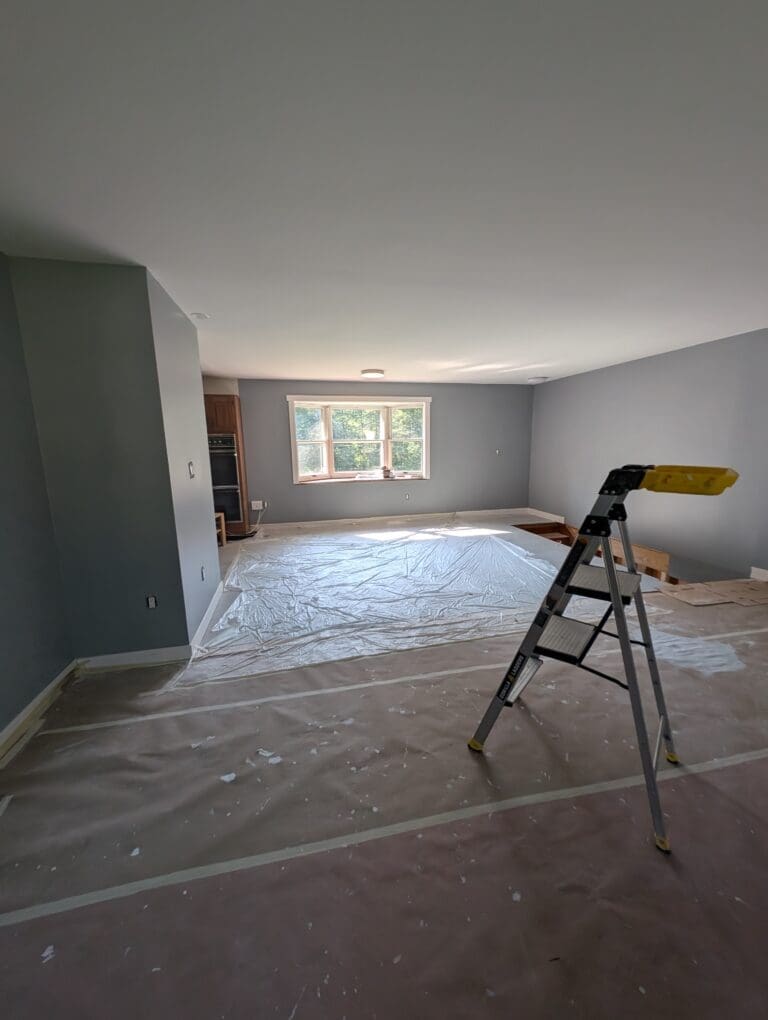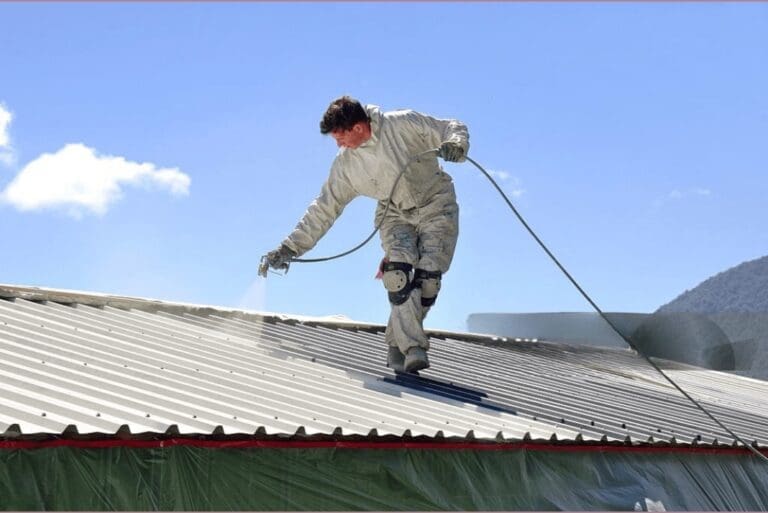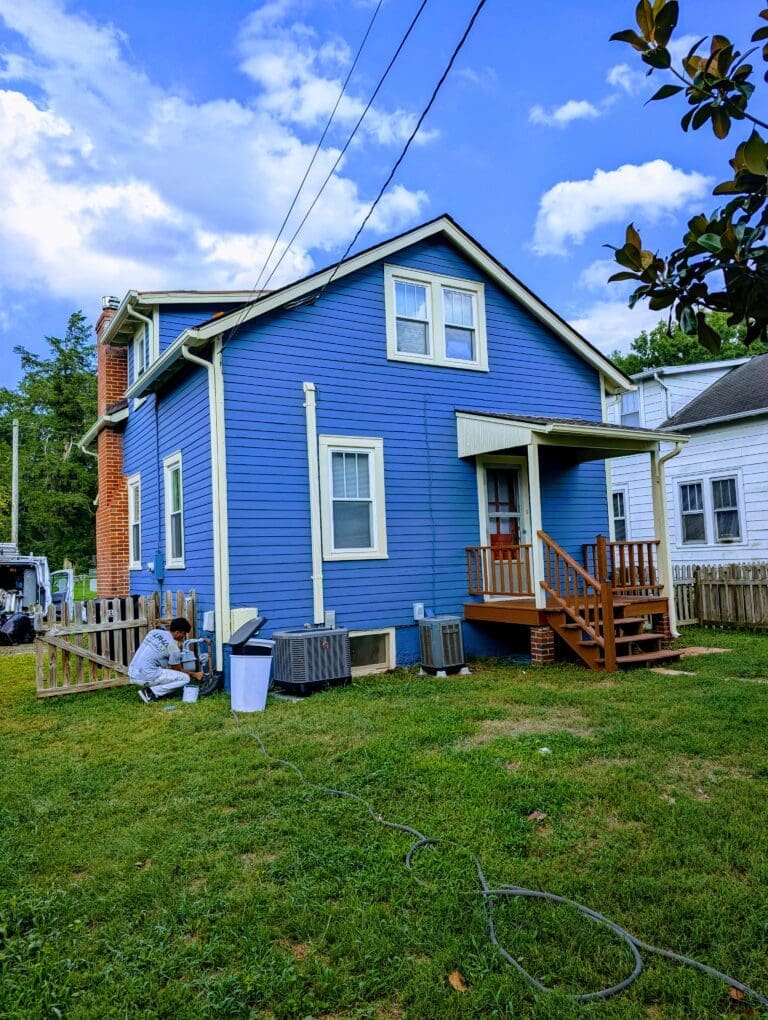Pros and Cons of Using Acrylic Paint for Interior and Exterior Projects in Fredericksburg
Acrylic paint is one of the most commonly used materials in both residential and commercial painting projects. It performs well in a variety of conditions, offers strong adhesion, and comes in countless color options. For homeowners and property managers in Fredericksburg, where the climate brings humidity, rainfall, and seasonal temperature swings, understanding how acrylic paint holds up in this region is key to making the right product decision. At Alpha Painting, we’ve worked with acrylics on everything from Colonial-style homes to contemporary commercial buildings throughout Fredericksburg, and have seen how the material performs firsthand.
Table of Contents
Durability in Fredericksburg’s Climate
Acrylic paint is known for its flexibility, which allows it to expand and contract with temperature changes. This matters a lot in Fredericksburg, where cold winters and hot summers test a material’s resilience. Compared to oil-based paints, acrylic holds up better in the long run without cracking or peeling as surfaces shift and settle through the seasons.
Its resistance to UV rays is another benefit, especially for exterior applications. Sun exposure can cause colors to fade over time, but high-quality acrylics are formulated to retain color longer under direct sunlight. This makes it a practical option for siding, shutters, and trim that receive daily sun. Acrylic also repels moisture well, making it less likely to blister or bubble when exposed to rain or humidity, which is common in Virginia from late spring through early fall.
However, not all acrylic paints are created equal. Lower-grade products can still fade prematurely or lose their finish in high-moisture zones. For projects in areas like River Club, Chancellor, or Downtown Fredericksburg, choosing the right formulation and finish is just as important as choosing the right color.
Ease of Application and Cleanup
For both professionals and DIY enthusiasts, acrylic paints are relatively user-friendly. They dry faster than oil-based options, which means quicker turnaround times and fewer delays between coats. This can be especially helpful when weather windows are short, such as during transitional spring or fall weeks.
Their low-odor and water-based formulation makes them safer for indoor use and easier to clean up with just soap and water. That makes them ideal for repainting interior spaces like kitchens, bathrooms, and living rooms without forcing homeowners to vacate the area due to strong fumes.
Fast drying times, though, can also be a double-edged sword. They don’t allow as much time to work and blend, which can be a drawback when working on larger surfaces or aiming for a very smooth, brush-free finish. Uneven application or visible lap marks can result if the paint isn’t applied with consistent technique.
Finish and Aesthetic Versatility
Acrylic paint is available in a wide range of sheens, from flat and matte to semi-gloss and high-gloss. This flexibility allows for tailored finishes depending on the room or surface being painted. For example, flat finishes tend to hide surface imperfections better and are great for ceilings or adult bedrooms. Semi-gloss, on the other hand, is more durable and easier to wipe down, making it better suited for kitchens, bathrooms, and trim.
Exterior surfaces benefit from satin or low-luster acrylics that balance visual appeal with washability and mildew resistance. Acrylic paint also holds color very well, which means clients can choose deep or vibrant tones without worrying about them dulling too quickly.
Still, one common complaint is that low-sheen acrylic finishes can show dirt and scuff marks more readily on high-traffic surfaces. And while the color retention is generally good, cheaper formulations can still shift tone when exposed to continuous moisture or sun. This is where product selection and proper prep work come into play.
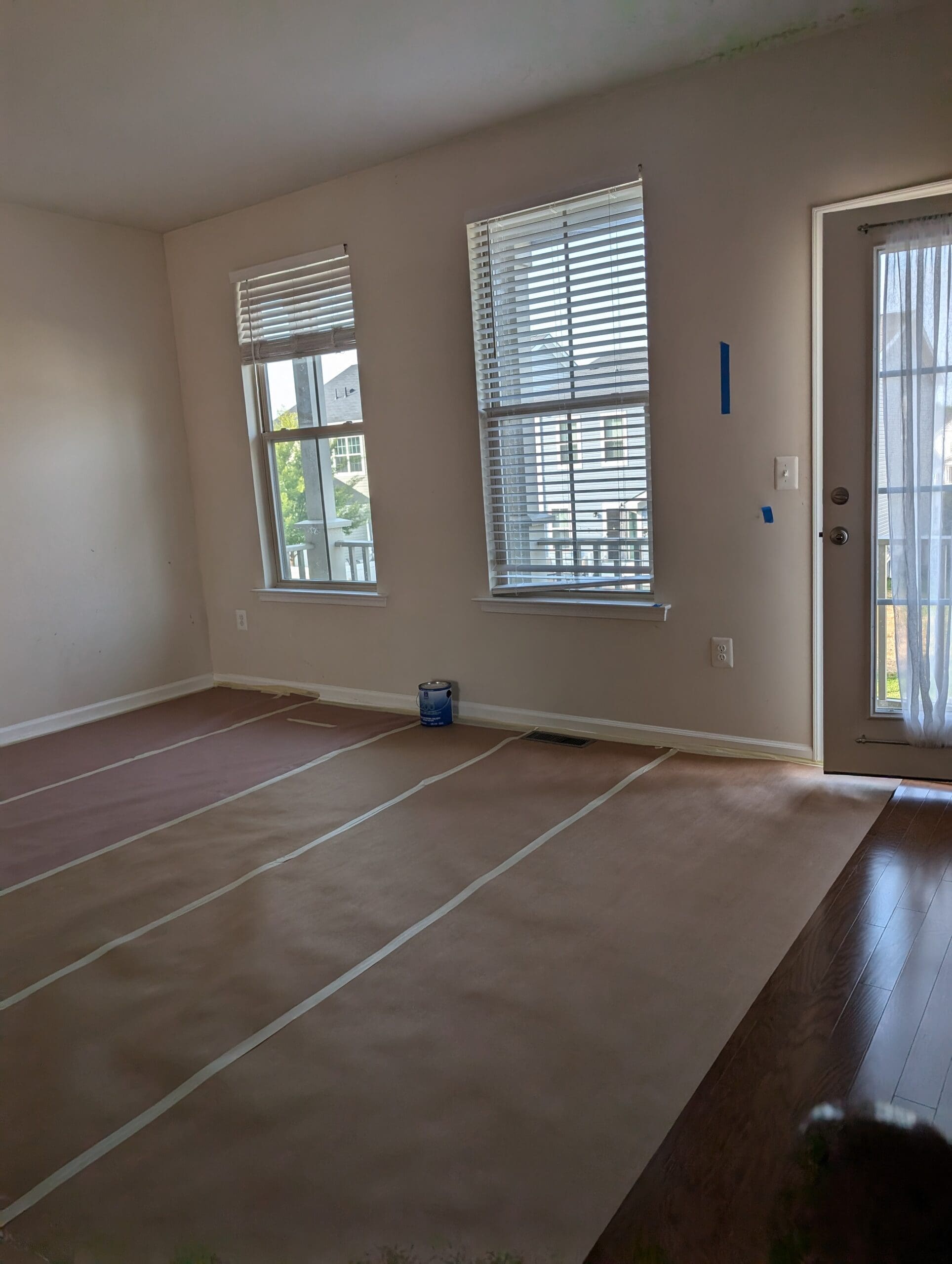
Adhesion and Surface Compatibility
Acrylics are known for their strong adhesion to a variety of substrates. Whether you’re painting drywall, wood, aluminum siding, brick, or even vinyl, the right acrylic product can bond well and stay put. For older homes in Fredericksburg that feature mixed surfaces or previously painted materials, acrylic provides reliable coverage without the hassle of major surface stripping.
That said, surface prep still matters. Applying acrylic paint to a dirty or glossy surface can reduce its bond, leading to early flaking. For wood surfaces, especially those that have been exposed to years of sun and moisture, priming is essential. For metal, rust inhibitors may be necessary before painting begins. Acrylics can perform extremely well when paired with compatible primers and applied to a properly prepared surface, but they aren’t a fix-all solution for poor prep work.
Environmental Considerations and Indoor Air Quality
Acrylic paint’s low VOC (volatile organic compound) levels make it one of the more environmentally responsible choices available. This is especially relevant for interior projects where air quality is a concern. Families with children, pets, or anyone sensitive to chemical odors benefit from the reduced fumes and quicker curing times.
Some brands now offer zero-VOC or low-odor versions that still deliver strong coverage and color depth. These formulations support a healthier indoor environment without compromising performance. For schools, healthcare facilities, or residential projects in neighborhoods like Lee’s Hill or Celebrate Virginia, these low-emission products can align with safety and wellness goals.
Keep in mind, though, that some of the most durable acrylics for exterior use still contain moderate VOCs. It’s important to review product specs before assuming all acrylics are equally eco-friendly. Balance between performance and environmental impact may be necessary depending on project goals.
Cost vs. Longevity
Acrylic paint is generally more affordable than high-end alkyd or epoxy coatings, especially when considering ease of application and minimal cleanup materials. The upfront cost makes it appealing for homeowners working within a budget. But the real value comes from its longevity and the reduced need for frequent touch-ups.
When applied correctly, a high-quality acrylic exterior paint can last up to 10 years or more, particularly when maintained properly. Interior acrylics can retain their look for many years in low-impact areas. This makes acrylic a smart investment for long-term property care.
On the flip side, cheaper acrylic options can underperform and may need repainting sooner, leading to increased costs over time. It’s not always the initial price tag that tells the full story—it’s how the paint performs over the lifespan of the coating. Choosing the right product tier is crucial, especially in a place like Fredericksburg where weather and wear can vary dramatically from block to block.
Final Thought
Acrylic paint offers a strong mix of performance, affordability, and ease of use that makes it suitable for many interior and exterior projects throughout Fredericksburg. It performs especially well in our region’s climate, holds color under sun exposure, and maintains flexibility as temperatures shift. But like any product, it has limitations. Success depends on proper surface prep, thoughtful product selection, and the right application methods.
Understanding these factors helps homeowners and property managers make smarter painting decisions. If you’re considering a paint refresh and want expert guidance on which type of acrylic paint will best serve your property, a professional evaluation from a trusted painting contractor can make all the difference.

